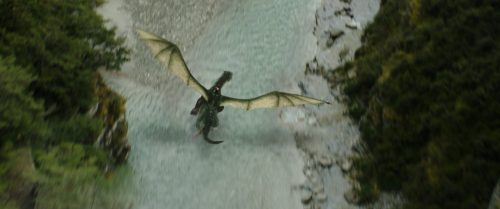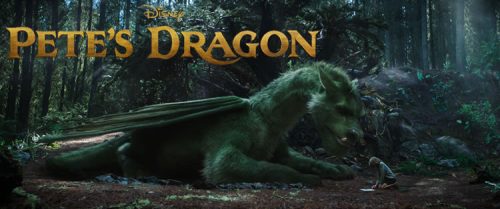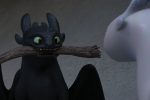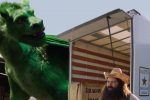For years, Mr. Meacham has delighted local children with tales of the fierce dragon that resides deep in the forest of the Pacific Northwest. To his daughter, Grace, these stories are nothing more than make believe. That is until she meets Pete, a mysterious 10-year-old who claims to live in the woods with a giant, green dragon named Elliot. Could there be truth in her father’s tales, after all…?
From Pete’s descriptions, Elliot resembles many of the dragons from fairytales and fantasy books – a humongous beast with huge wings and magical powers! But how much do you know about dragons? Find out about these fascinating creatures and where they came from with these eight fiery facts…
- Dragons have appeared in myths and legends around the world for centuries, dating as far back as the fourth century BC.
- They’re usually depicted as large snakes or lizard-like creatures with barbed tails, long claws and sharp fangs. Some are able to fly using huge wings, and breathe fire from their nostrils!
- Many scientists think that the belief in these mighty monsters may have come from prehistoric fossils. When ancient peoples found dinosaur bones, they could easily have mistaken them for the remains of dragons.
- In Middle Eastern mythology, dragons were evil beings. Iranian folklore speaks of a wicked dragon called Aži Dahāka, and the Ancient Egyptians believed a dragon named Apep was the scary serpent of the underworld.
- According to the Ancient Greeks and Romans, dragons had both protective and fearsome qualities. One such beast was Ladon, a multi-headed dragon who guarded the Golden Apples in the Garden of the Hesperides.
- During Medieval times, dragons were often portrayed as terrifying beasts sleighed by brave heroes. A classic example? The story of St. George and The Dragon!
- Dragons haven’t always had a fearsome and frightening reputation, however. In Eastern culture, in fact, they were nearly always regarded as strong, powerful beings who were kind and caring.
- According to Chinese and Japanese mythology, dragons were protectors who looked after the gods, treasures and the elements. They were even symbols of good luck, too!
Truth in the tale – could dragons have existed?
 In the movie, Grace doesn’t believe in dragons – never mind a lovable, magical monster like Eliot! Huge, flying, fire-breathing beasts could never have existed, right? Or could they…?
In the movie, Grace doesn’t believe in dragons – never mind a lovable, magical monster like Eliot! Huge, flying, fire-breathing beasts could never have existed, right? Or could they…?
Time for take off!
 Many insects, birds and bats fly with wings – and even some snakes, squirrels and lizards can take to the sky. But a dragon?
Many insects, birds and bats fly with wings – and even some snakes, squirrels and lizards can take to the sky. But a dragon?
For a creature to be able to fly, it comes down to a physics calculation – put simply, how much air needs to be pushed down to lift the body up? And the answer for a dragon? A LOT! If the dragons of our fairytales were to fly, their wings would need to be large, thick and strong to the point of impossible. Sadly (or perhaps thankfully!), according to scientists, it’s not plausible that these humongous hulks could have developed the bones and muscles in their wings to lift their bulky bodies off the ground.
That said, smaller, more slender dragons flying through the skies isn’t completely out of the question. After all, pterosaurs were flying dinosaurs with a 4m-tall body and a 10m wingspan. But in comparison to the size of Pete’s dragon, Elliot, that’s pretty tiny, in fact!
Feel the heat!
 There aren’t any creatures on Earth (that we know of, at least!) that can breath fire. There is, however, the bombardier beetle. Not too dissimilar to a dragon’s most powerful weapon, this insect delivers one seriously explosive attack on its enemy. By mixing chemicals in its body’s ‘“firing chamber”, the beetle can spray a toxic liquid that reaches 100°C!
There aren’t any creatures on Earth (that we know of, at least!) that can breath fire. There is, however, the bombardier beetle. Not too dissimilar to a dragon’s most powerful weapon, this insect delivers one seriously explosive attack on its enemy. By mixing chemicals in its body’s ‘“firing chamber”, the beetle can spray a toxic liquid that reaches 100°C!
So, could a dragon breathe fiery flames from its nostrils? It’s unlikely (100°C is far from the temperature of fire), but a creature that gives its victims a burning blast? Well, that exists even to today!
Pete’s Dragon is in UK cinemas from August 12, 2016














